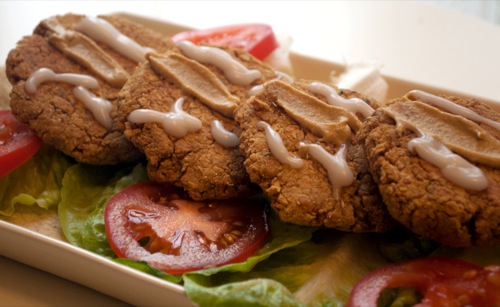What is gluten free flour?
Is there a difference in cooking/baking with gluten free flours?
Can I make my own gluten free flour?
Most flour is made from wheat, which contains gluten, and more people are becoming allergic or unable to tolerate to gluten.

There are many types of gluten free flours, such as chickpea/garbanzo flour, teff flour, buckwheat flour, brown rice flour, to name a few. They each have their own unique properties, like if they have a sweet or nutty or neutral flavor.
Commercial oat flour may or may not be gluten free. Oats are naturally gluten free, but some are cross-contaminated with wheat during transport, etc. Homemade oat flour made from certified gluten-free oats is your safest bet for gluten-free oat flour. (How to make oat flour).
When replacing flour with gluten free flours in recipes, you can't do a 1:1 ratio (i.e. replace one cup of whole wheat with 1 cup chickpea) unless you're using oat flour, then 1:1 should be okay. With GF baking substitutes, it's best to use a blend or mixture of gluten free flours in recipes (with a binder), and substitute 1 cup of the blend for 1 cup flour. (There's a fool proof GF flour recipe in my latest cookbook Everyday Happy Herbivore, but blends are sold commercially and you can find recipes for making your own online).
Another issue with using gluten free flours is liquid. GF flours and GF flour blends are considered 'thirsty' and thus, they will absorb more liquid than regular flour. This can usually be fixed by adding a little more liquid. If making bread, the mix should look more like batter and be a stickier than normal dough. Cake mix will also not be as firm as with regular flour.
There is no set amount of extra liquid to addwhen using a gluten free flour as a replacement in a recipe, you kind of have to play it by ear adding a little extra liquid at a time as you go.
Alos, since gluten free flours absorb liquid, you can also use one of them (i.e. chickpea flour or brown rice flour) in place of cornstarch for thickening up a gravy or soup.













